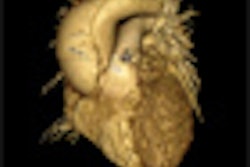The World Health Organization (WHO) criteria for diagnosing radiographic pneumonia were ineffective for screening young children admitted to the emergency department at Children's Hospital Boston, according to a study in the June issue of the Pediatric Infectious Disease Journal.
The study evaluated more than 2,000 pediatric patients 5 years of age or younger. Emergency physicians prospectively collected clinical information about children who were suspected of having pneumonia and had a chest x-ray exam (Pediatr Infect Dis J, June 2012, Vol. 31:6, pp. 561-564).
The WHO guidelines were established for use in resource-limited healthcare settings. They rely on identifying simple clinical signs exhibited by a patient.
The children were classified as meeting the WHO definition of pneumonia if they had a cough or difficulty breathing, and if they exhibited age-specific WHO-defined tachypnea, or very rapid breathing, according to lead author Dr. Sarah Wingerter, an emergency physician and instructor in pediatrics at Harvard Medical School.
Among the patient cohort of 2,008 children, 28.5% had tachypnea based on age-specific respiratory rate thresholds. The researchers also evaluated temperature and oxygen saturation as factors to diagnose pneumonia.
Chest radiographic findings confirmed that 324 children had pneumonia; however, only 111 patients, or 34.2%, met the WHO guidelines. Compared with respiratory rate, oxygen saturation offered slightly improved test characteristics, the authors reported.
While acknowledging that these guidelines are recommended only for when x-ray equipment may not be available or its use is limited, the authors reconfirmed the effectiveness of chest x-ray in rapidly identifying pneumonia in all children suspected of having the condition.



















